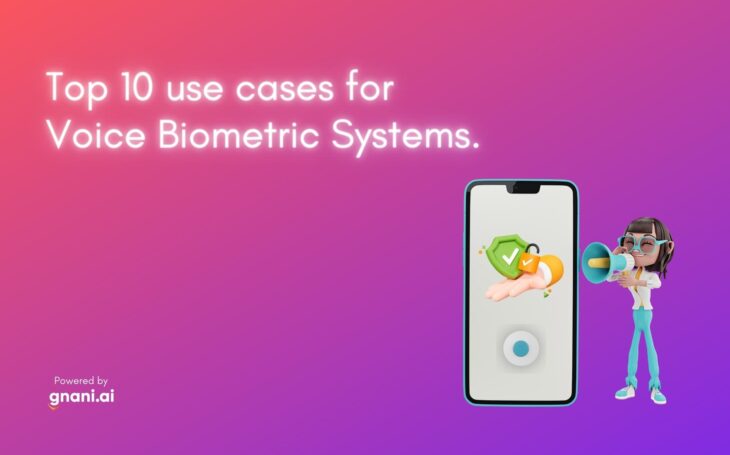
In these modern times, it’s more important than ever to protect our information. With all of our personal data floating around in the ether, it’s only a matter of time before something falls into the wrong hands. That’s where voice biometric systems come in. By using unique aspects of an individual’s voice to verify their identity, these systems provide an extra layer of security that can help to keep our information safe. In a world where data breaches are becoming more and more common, voice biometric systems offer a much-needed measure of protection.
Voice biometrics is an exciting and relatively new technology with a range of potential use cases. In this article, we explore 10 of the most promising applications for voice biometrics systems.
- Call centre authentication: Voice biometrics can be used to authenticate customers over the phone, eliminating the need for PIN codes or other forms of identification. This helps to reduce fraud and protect customer data.
- Financial services: Voice biometrics can be used by financial institutions for things like account verification and fraud prevention.
- Healthcare: Voice biometrics can be used in the healthcare industry for patient identification and access control to medical records.
- Government: Voice biometrics can be used by government agencies for things like border control and passport verification.
- Law enforcement: Voice biometrics can be used by law enforcement agencies for things like witness identification and suspect tracking.
- Education: Voice biometrics can be used in the education sector for student identification and assessment.
- Retail: Voice biometrics can be used in retail environments for customer service and fraud prevention.
- Hospitality: Voice biometrics can be used in the hospitality industry for guest identification and reservation management.
- Travel: Voice biometrics can be used in the travel industry for things like airport security and passport control.
- Telecommunications: Voice biometrics can be used in the telecommunications industry for customer service and fraud prevention.
Though it has a lot of benefits, there are a few challenges that need to be overcome for perfection. Some challenges in implementing a voice biometric system:
- Voice biometrics systems require speakers to enunciate clearly in order to work properly. This can be difficult for some people, particularly those who have speech impairments.
- Voice biometrics systems can be fooled by recordings of someone’s voice. This means that they are not foolproof and should not be relied upon as the sole method of authentication.
- Voice biometrics systems require a database of known voices to be effective. This can be difficult to create and maintain, particularly for large organizations.
- Voice biometrics systems can be expensive to implement and maintain.
- Voice biometrics systems can be intrusive, as they require users to provide a recording of their voice. This can be off-putting for some people.
Voice biometrics is a versatile technology with a range of potential use cases. In this article, we explored 10 of the most promising applications for voice biometrics systems. So, the next time you’re looking to secure your information, consider using a voice biometric system. It just might be the best decision you ever make. If you’re looking for a way to improve security and customer service, voice biometrics is definitely worth considering.
Is there any other industry you think voice biometrics could be useful in? Let us know in the comments below!
Thanks for reading!




